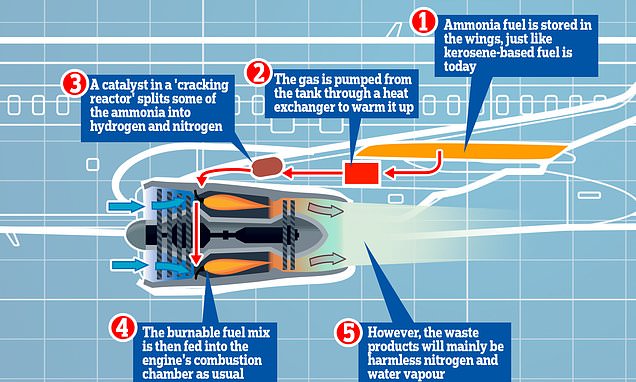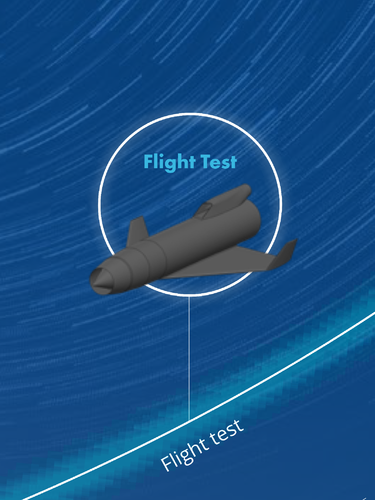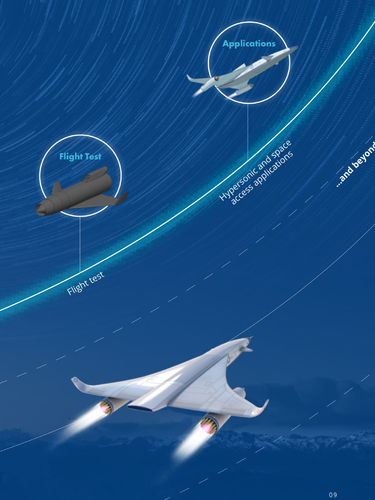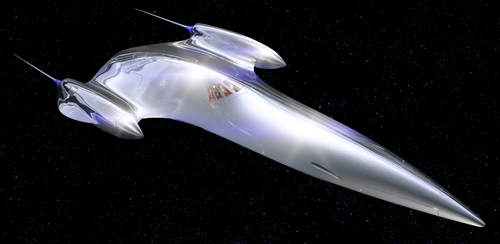You are using an out of date browser. It may not display this or other websites correctly.
You should upgrade or use an alternative browser.
You should upgrade or use an alternative browser.
Reaction Engines SABRE engine (Skylon Spaceplane)
just musing, have there been any further information released showing the test vehicle in which the intended 'first flight' is to be achieved ?
cheers, Joe
cheers, Joe
red admiral
ACCESS: Top Secret
- Joined
- 16 September 2006
- Messages
- 1,805
- Reaction score
- 2,377
just musing, have there been any further information released showing the test vehicle in which the intended 'first flight' is to be achieved ?
cheers, Joe
Full cycle ground based demonstrator first with propulsion elements as well as heat exchanger.
Not really much existing that you could bolt one of these engines to and see what happens over the entire flight envelope.
- Joined
- 25 June 2014
- Messages
- 1,564
- Reaction score
- 1,499
have there been any further information released showing the test vehicle in which the intended 'first flight' is to be achieved ?
Their website states that "There are three core building blocks to the SABRE engine, the pre-cooler, the engine core and the thrust chamber. ... We have demonstrated each of these independently over the last four years." Another page adds that "... will culminate in full system testing in 2020, at which point the world’s first air-breathing engine capable of accelerating from zero to Mach 5 will have been demonstrated."
That is all ground-based. The new funding takes off from there. There are certainly few if any unclassified airframes capable of sustaining Mach 5 flight for long enough without breaking up or melting, so likely we will see rather more pedestrian flights to start with and there are a good many opportunities there. I would hazard that whatever sponsors come forward in the new funding round might have something to say about whose plane/s they bolt it to and at what speed/s.
- Joined
- 21 January 2015
- Messages
- 12,148
- Reaction score
- 16,351
have there been any further information released showing the test vehicle in which the intended 'first flight' is to be achieved ?
Their website states that "There are three core building blocks to the SABRE engine, the pre-cooler, the engine core and the thrust chamber. ... We have demonstrated each of these independently over the last four years." Another page adds that "... will culminate in full system testing in 2020, at which point the world’s first air-breathing engine capable of accelerating from zero to Mach 5 will have been demonstrated."
That is all ground-based. The new funding takes off from there. There are certainly few if any unclassified airframes capable of sustaining Mach 5 flight for long enough without breaking up or melting, so likely we will see rather more pedestrian flights to start with and there are a good many opportunities there. I would hazard that whatever sponsors come forward in the new funding round might have something to say about whose plane/s they bolt it to and at what speed/s.
I thought they were going to build a purpose constructed flight demonstrator not use an existing airframe.
- Joined
- 25 June 2014
- Messages
- 1,564
- Reaction score
- 1,499
Yes, for the hypersonic tests, surely so. But for lower flight speeds there are plenty of existing candidates bumbling about the sky and running out of things to do. If I were Reaction Engines, I would want to flight-test SABRE's basic operation and low-level performance before I stuck it in an expensive one-off optimised for Mach 5. Much as R-R hung the civil Olympus under an old Vulcan before sticking it in Concorde.I thought they were going to build a purpose constructed flight demonstrator not use an existing airframe.
Rhinocrates
ACCESS: Top Secret
- Joined
- 26 September 2006
- Messages
- 3,053
- Reaction score
- 7,780
New company logo I see, based on the precooler.
 www.reactionengines.co.uk
www.reactionengines.co.uk
Making beyond possible. Reaction Engines launches new brand positioning. :: Reaction Engines
Flying faster. Going further. Making giant leaps in understanding. Reaction Engines is unlocking the future of space access and hypersonic flight as well as revolutionizing thermal management solutions in multiple industries. We are making beyond possible.
Attachments
Last edited:
FighterJock
ACCESS: Above Top Secret
- Joined
- 29 October 2007
- Messages
- 5,603
- Reaction score
- 5,932
REL‘s new logo is like Marmite, you either like it or hate it.
- Joined
- 21 January 2015
- Messages
- 12,148
- Reaction score
- 16,351
Conceptual study into hypersonic test bed for SABRE technology :: Reaction Engines
Cranfield Aerospace Solutions, Reaction Engines, BAE Systems and Frost & Sullivan evaluating high-speed flight-test.
REL‘s new logo is like Marmite, you either like it or hate it.
As long as they don't reshape Skylon as a giant twigglet(s), everybody will be safe.
Awful. Although might appeal to the gay community...
*without any disrespect. Just to pass the idea while avoiding vulgar language.
Imagine the headline:
Skylon to launch a probe to Uranus...
I wonder if it looks like this vehicle in their brochure? https://www.reactionengines.co.uk/media?folder=BrochuresConceptual study into hypersonic test bed for SABRE technology :: Reaction Engines
Cranfield Aerospace Solutions, Reaction Engines, BAE Systems and Frost & Sullivan evaluating high-speed flight-test.www.reactionengines.co.uk
Attachments
Last edited:
- Joined
- 25 June 2014
- Messages
- 1,564
- Reaction score
- 1,499
I wonder if it looks that this vehicle in their brochure? https://www.reactionengines.co.uk/media?folder=Brochures
If the rather impractical "application" spaceplane (Single-engine-out anybody?) is anything to go by, probably not.
- Joined
- 25 June 2014
- Messages
- 1,564
- Reaction score
- 1,499
It doesn't look like there is much room for cryogenic fuel tanks in these concepts!
Not sure where the demonstrator puts its undercart either, unless the thing is disposable which seems to undermine the whole point of SABRE.
On the other hand the operational spaceplane presumably has its fuselage filled with hydrogen except for a teensy payload bay. Hope the canard foreplane doesn't melt.
FighterJock
ACCESS: Above Top Secret
- Joined
- 29 October 2007
- Messages
- 5,603
- Reaction score
- 5,932
The SABRE engine
Wonder why they designed it with canard foreplane's? it seems rather stupid (unless they can retract the canard's at some point during the flight)
It doesn't look like there is much room for cryogenic fuel tanks in these concepts!
Not sure where the demonstrator puts its undercart either, unless the thing is disposable which seems to undermine the whole point of SABRE.
On the other hand the operational spaceplane presumably has its fuselage filled with hydrogen except for a teensy payload bay. Hope the canard foreplane doesn't melt.
Wonder why they designed it with canard foreplane's? it seems rather stupid (unless they can retract the canard's at some point during the flight)
- Joined
- 25 June 2014
- Messages
- 1,564
- Reaction score
- 1,499
Wonder why they designed it with canard foreplane's? it seems rather stupid (unless they can retract the canard's at some point during the flight)
I think it must be a response to the NASA study which slammed Skylon for burning up the tail in the rocket exhaust. They have very sensibly moved the engines back, as had originally been done with HOTOL, but would have promptly ended up with the same problem of a nose-heavy plane when fully laden. B.Ae blew hot and cold on adding canards to correct the imbalance in different iterations of HOTOL, I guess we are seeing the same approach here.
It might pay to make them retractable, Tu 144 style, once the bow tank has been emptied during initial subsonic climb to altitude. On the other hand, if the economics work best with a fast transistion to supersonic climb before significant fuel is burned, then fixing them in place could be a better bet.
red admiral
ACCESS: Top Secret
- Joined
- 16 September 2006
- Messages
- 1,805
- Reaction score
- 2,377
A better summary might be that the airframe concept hasn't really matured since the 1980s. They're still searching for a viable configuration on which to integrate their engine. Hence the removal of any technical content on airframes from their site and replacement by PR images.
If you can't viably integrate airframe and engine together then there's no point.
If you can't viably integrate airframe and engine together then there's no point.
- Joined
- 25 June 2014
- Messages
- 1,564
- Reaction score
- 1,499
I don't think that is a showstopper. Viable configurations are known and are evolving all the time and Reaction Engines have learned the hard way to stick with the experts. The problems are more about mission profiles and cost-effective choice of technology levels - both of which depend on your predicted customer base. Personally I'd hope to see the long fuselage strakes of the Lockheed Blackbirds (which were basically flying fuel tanks and, given a zoom-climb to peak altitude, would have come close to being suborbital spaceplanes).
red admiral
ACCESS: Top Secret
- Joined
- 16 September 2006
- Messages
- 1,805
- Reaction score
- 2,377
I don't think that is a showstopper. Viable configurations are known and are evolving all the time and Reaction Engines have learned the hard way to stick with the experts.
Which configurations? So far nothing has worked e.g Skylon dropped.
Stick with the experts? REL build high temperature heat exchangers. They don't have experience of detailed design or build or operation of air/spacecraft.
- Joined
- 27 May 2008
- Messages
- 1,178
- Reaction score
- 2,483
Not so sure about the “nothing has worked statement”. RE moved away from Skylon when Alan left and BAe took over. It was more of a company strategy decision rather than a bin it cause it won’t work.I’m not even sure the NASA work said it was a show stopper, from memory it described it as challenging but might be overcome with the right approach. Then there was the Strathclyde University revised Skylon configuration which was developed with the rear fuselage issue in mind but was never (at least to my knowledge) evaluated by NASA.
Last edited:
- Joined
- 25 June 2014
- Messages
- 1,564
- Reaction score
- 1,499
@red admiral:
The conventionally-configured X-15 was a successful two-stage spaceplane. The tailless compound-delta-winged Space Shuttle was vertically launched, while the V-tailed compound-delta-winged X-35 is also vertically launched and still in service. These configurations have all been proven, there and elsewhere, in all phases of the SSTO flight envelope. Even the outboard tail configuration of SpaceShips One and Two has been repeatedly proven in the lower-altitude SSTO flight regions by various experimental prototypes. So it is quite wrong to claim that "so far nothing has worked". If you just mean that no SSTO has yet made it into space, I think we already know that.
Of course, when I write that "Reaction Engines have learned the hard way to stick with the experts" I mean that their Skylon blunder taught them to look elsewhere for proper experts in air/spacecraft design. Note that, to this end, they have put the design of the demonstrator aircraft out to tender. Given these simple facts, I am puzzled what else you might have read into my remark.
The conventionally-configured X-15 was a successful two-stage spaceplane. The tailless compound-delta-winged Space Shuttle was vertically launched, while the V-tailed compound-delta-winged X-35 is also vertically launched and still in service. These configurations have all been proven, there and elsewhere, in all phases of the SSTO flight envelope. Even the outboard tail configuration of SpaceShips One and Two has been repeatedly proven in the lower-altitude SSTO flight regions by various experimental prototypes. So it is quite wrong to claim that "so far nothing has worked". If you just mean that no SSTO has yet made it into space, I think we already know that.
Of course, when I write that "Reaction Engines have learned the hard way to stick with the experts" I mean that their Skylon blunder taught them to look elsewhere for proper experts in air/spacecraft design. Note that, to this end, they have put the design of the demonstrator aircraft out to tender. Given these simple facts, I am puzzled what else you might have read into my remark.
Maybe something along the lines of the LM Blackswift might work? https://www.secretprojects.co.uk/threads/darpa-lm-skunk-works-blackswift-htv-3x.8846/
Decent internal volume for cryogenic fuel and two engine tunnels.
Decent internal volume for cryogenic fuel and two engine tunnels.
- Joined
- 9 October 2009
- Messages
- 21,970
- Reaction score
- 13,619
It doesn't look like there is much room for cryogenic fuel tanks in these concepts!
Not sure where the demonstrator puts its undercart either, unless the thing is disposable which seems to undermine the whole point of SABRE.
On the other hand the operational spaceplane presumably has its fuselage filled with hydrogen except for a teensy payload bay. Hope the canard foreplane doesn't melt.
Could they be looking at magnetic landing systems, like the Soviets were during the '80s?
- Joined
- 27 May 2008
- Messages
- 1,178
- Reaction score
- 2,483
Could they be looking at magnetic landing systems, like the Soviets were during the '80s?
Sorry for the thread drift, but can you publish details of the Soviet work ?
- Joined
- 9 October 2009
- Messages
- 21,970
- Reaction score
- 13,619
We had a thread on it somewhere, I'll see if I can find it.
EDIT: Here we go. The MiG bureau's magnetic runway system, which was being developed for the Soviet Navy. Thought there was more detail about the system in the thread, but my memory may be playing tricks on me there.
EDIT: Here we go. The MiG bureau's magnetic runway system, which was being developed for the Soviet Navy. Thought there was more detail about the system in the thread, but my memory may be playing tricks on me there.
Last edited:
Which configurations? So far nothing has worked e.g Skylon dropped.
By thier own admission "Skylon" was always mostly a place-holder for REL until someone with a better concept came along. The Skylon was highly simplified in aerodynamics so thatmore focuse could remain on the engines.
Steelpillow is quite correct in that there are pretty much thousands of 'basic' zero-to-hypersonic configurations that could be used with the engines if they can be integreated into the design. Right now testing and proving the concept in flight is probably the main issue as that will help flesh out the actual data from the infered data which itself will help define what kind of airframe is best for the concept.
Randy
- Joined
- 25 June 2014
- Messages
- 1,564
- Reaction score
- 1,499
Well, that would be a step ahead of the rubber trampoline the Royal Navy put up on an aircraft carrier and then landed a de Havilland Vampire on.Could they be looking at magnetic landing systems, like the Soviets were during the '80s?
Rhinocrates
ACCESS: Top Secret
- Joined
- 26 September 2006
- Messages
- 3,053
- Reaction score
- 7,780
I'd consider the new design as a placeholder, but remember that Skylon was an SSTO whereas this new design is the first stage of a 2STO, so its tanks will be smaller and it doesn't have to re-enter at Mach 25.
- Joined
- 21 January 2015
- Messages
- 12,148
- Reaction score
- 16,351

The rocket motor of the future “breathes” air like a jet engine
This theoretical engine could drastically reduce the cost of getting to space.
 arstechnica.com
arstechnica.com
- Joined
- 25 June 2014
- Messages
- 1,564
- Reaction score
- 1,499

The rocket motor of the future “breathes” air like a jet engine
This theoretical engine could drastically reduce the cost of getting to space.arstechnica.com
Interesting. Their company website is cagey about how the thing works: https://www.marsengines.com/MEET-FENRIS/
so hard to say how it compares with SABRE. Certainly appears a lot simpler, but one wonders a) how they get enough air in for takeoff thrust and b) how they keep things cool for Mach 3 plus airspeeds.

The rocket motor of the future “breathes” air like a jet engine
This theoretical engine could drastically reduce the cost of getting to space.arstechnica.com
Sounds like it is just another air-augmented rocket. Operationally efficient propulsion system study (OEPSS) data book. Volume 10; Air Augmented Rocket Afterburning
I'm no expert in any of this but i thought ammonia was a fairly nasty chemical??

 www.dailymail.co.uk
www.dailymail.co.uk

Zero-emission ammonia-fuelled aeroplanes could launch 'within years'
The collaboration between Oxford-based Reaction Engines and the UK the Science and Technology Facilities Council could see kerosene replaced in the role of jet fuel.
- Joined
- 25 June 2014
- Messages
- 1,564
- Reaction score
- 1,499
While the ammonia jet engine is surely feasible in engineering terms, I have other doubts about its practicality:
Ammonia is pretty toxic in its own right, while gasoline is only moderately so. Although it is less flammable than gasoline, it is far more caustic; you really do not want it in your lungs for example. Because of this, localised ammonia storage has a lot more safety red tape than gasoline, you can't just fill up a plastic can and stick it in the back of your car. A cloud of gasoline fumes rolling over your town will cause more harm from the additives than from the gasoline fumes, but the same cannot be said for ammonia. The stuff was even used as a poison gas during WWI, though it was admittedly not very effective in the field. So the idea expressed by one of us here that the two are comparable is sadly misguided. Engineering failure and crashability will be interesting topics for the certification authorities, while the cost of safe bulk storage close to the travelling public (wrt both accident and terrorism) will impact the economics.
"perhaps some nitrogen oxides — although the latter can be removed from the exhaust using more ammonia." Really? Nitrogen oxides are nasty pollutants, being both toxic and greenhouse; one of the great political criticisms of Diesel cars over petrol is their nitrogen oxide emissions. Are we really being led to believe that these nasty substances can be scrubbed from ammonia exhaust to residual levels lower than Diesel exhaust and that the added ammonia will not cause a worse problem?
Then there is the thermodynamic cycle. It is well known that cooling the intake mixture of a combustion engine, be it jet or piston, increases its efficiency. This thing has a pre-heater! Will the cracked mixture be re-cooled before burning? We are not told outright and it is absent from the diagram, but it better be or the efficiency will be lousy. Reaction Engines may be good at adding more heat exchangers as occasion demands, including some pretty nifty pre-coolers, but it does put the costs up something shocking.
Ammonia has been used as a fuel on occasion, experimentally and in desperate times for motor vehicles, sometimes as the least vile option for rockets, and also at least proposed (though I am not sure of it was ever used) as a lifting gas for balloons and airships. IMHO the ammonia jet will go the same way as the ammonia airship and the ammonia ground vehicle - into the Great Home of Appallingly Bad Ideas in the Sky.
Ammonia is pretty toxic in its own right, while gasoline is only moderately so. Although it is less flammable than gasoline, it is far more caustic; you really do not want it in your lungs for example. Because of this, localised ammonia storage has a lot more safety red tape than gasoline, you can't just fill up a plastic can and stick it in the back of your car. A cloud of gasoline fumes rolling over your town will cause more harm from the additives than from the gasoline fumes, but the same cannot be said for ammonia. The stuff was even used as a poison gas during WWI, though it was admittedly not very effective in the field. So the idea expressed by one of us here that the two are comparable is sadly misguided. Engineering failure and crashability will be interesting topics for the certification authorities, while the cost of safe bulk storage close to the travelling public (wrt both accident and terrorism) will impact the economics.
"perhaps some nitrogen oxides — although the latter can be removed from the exhaust using more ammonia." Really? Nitrogen oxides are nasty pollutants, being both toxic and greenhouse; one of the great political criticisms of Diesel cars over petrol is their nitrogen oxide emissions. Are we really being led to believe that these nasty substances can be scrubbed from ammonia exhaust to residual levels lower than Diesel exhaust and that the added ammonia will not cause a worse problem?
Then there is the thermodynamic cycle. It is well known that cooling the intake mixture of a combustion engine, be it jet or piston, increases its efficiency. This thing has a pre-heater! Will the cracked mixture be re-cooled before burning? We are not told outright and it is absent from the diagram, but it better be or the efficiency will be lousy. Reaction Engines may be good at adding more heat exchangers as occasion demands, including some pretty nifty pre-coolers, but it does put the costs up something shocking.
Ammonia has been used as a fuel on occasion, experimentally and in desperate times for motor vehicles, sometimes as the least vile option for rockets, and also at least proposed (though I am not sure of it was ever used) as a lifting gas for balloons and airships. IMHO the ammonia jet will go the same way as the ammonia airship and the ammonia ground vehicle - into the Great Home of Appallingly Bad Ideas in the Sky.
Last edited:
Similar threads
-
-
Secret Projects: Military Space Technology by Bill Rose
- Started by overscan (PaulMM)
- Replies: 35
-
-
LASL ASPEN (Aerospace Plane With Nuclear Engines) SSTO (1961)
- Started by flateric
- Replies: 6




